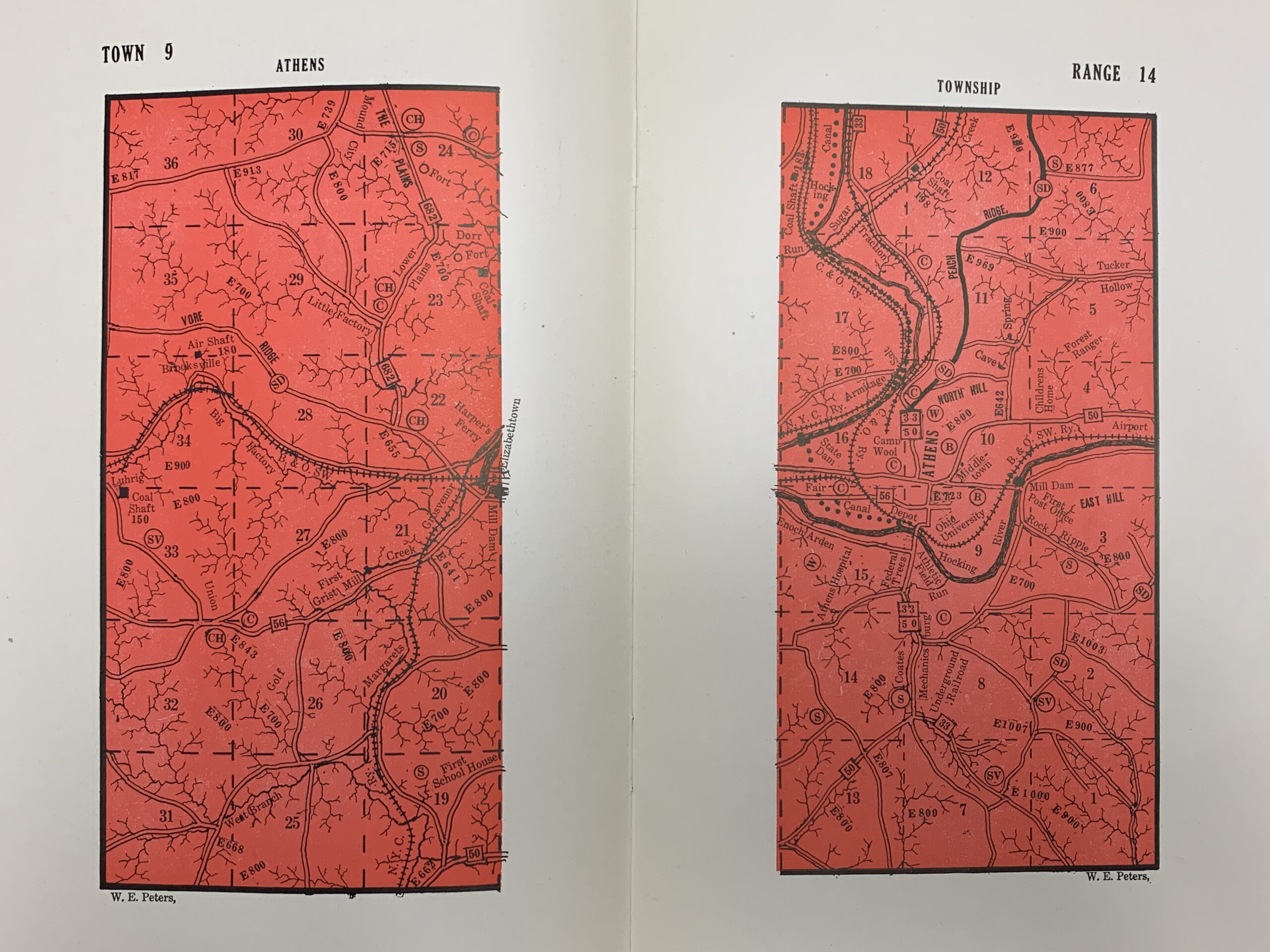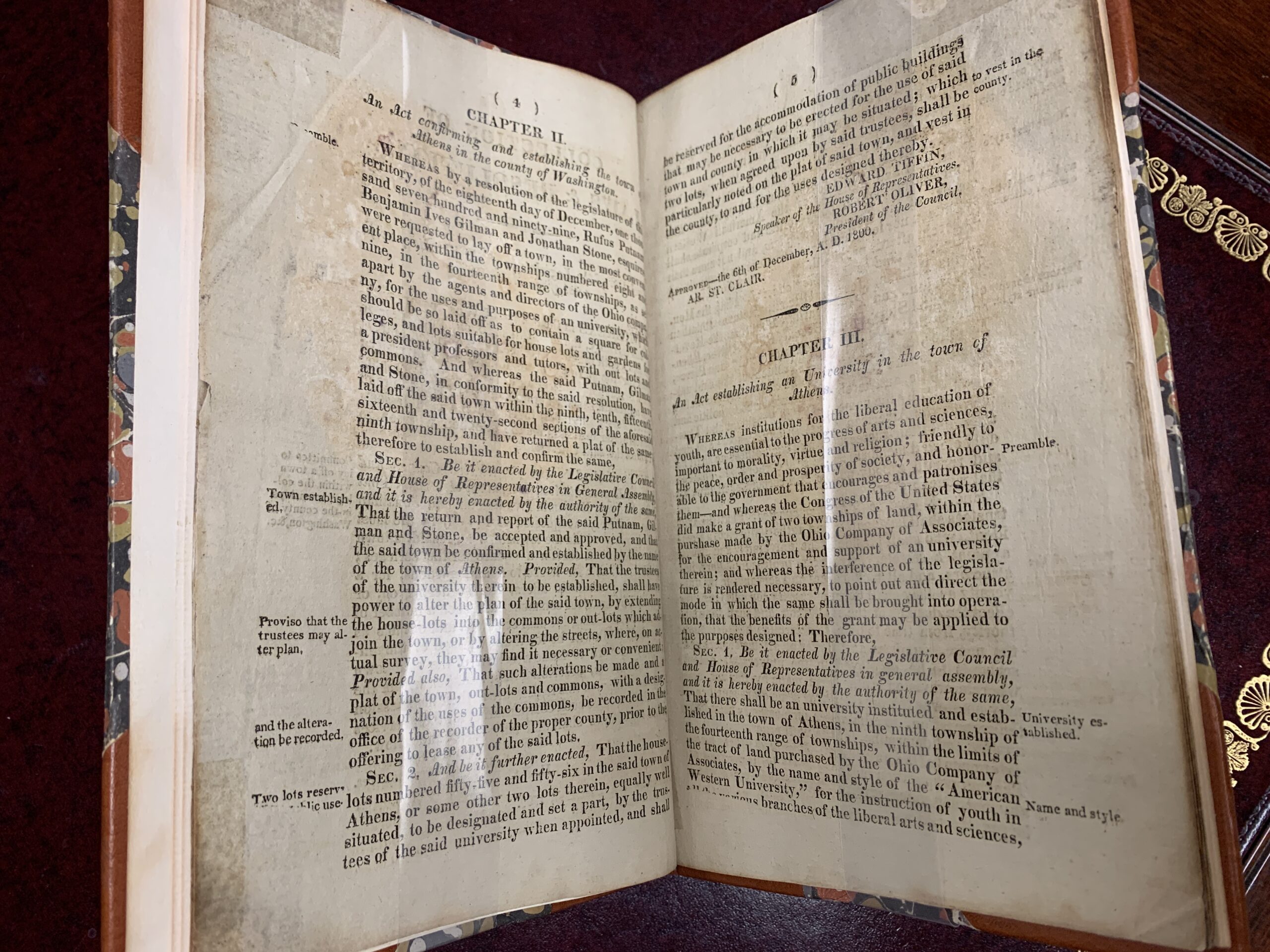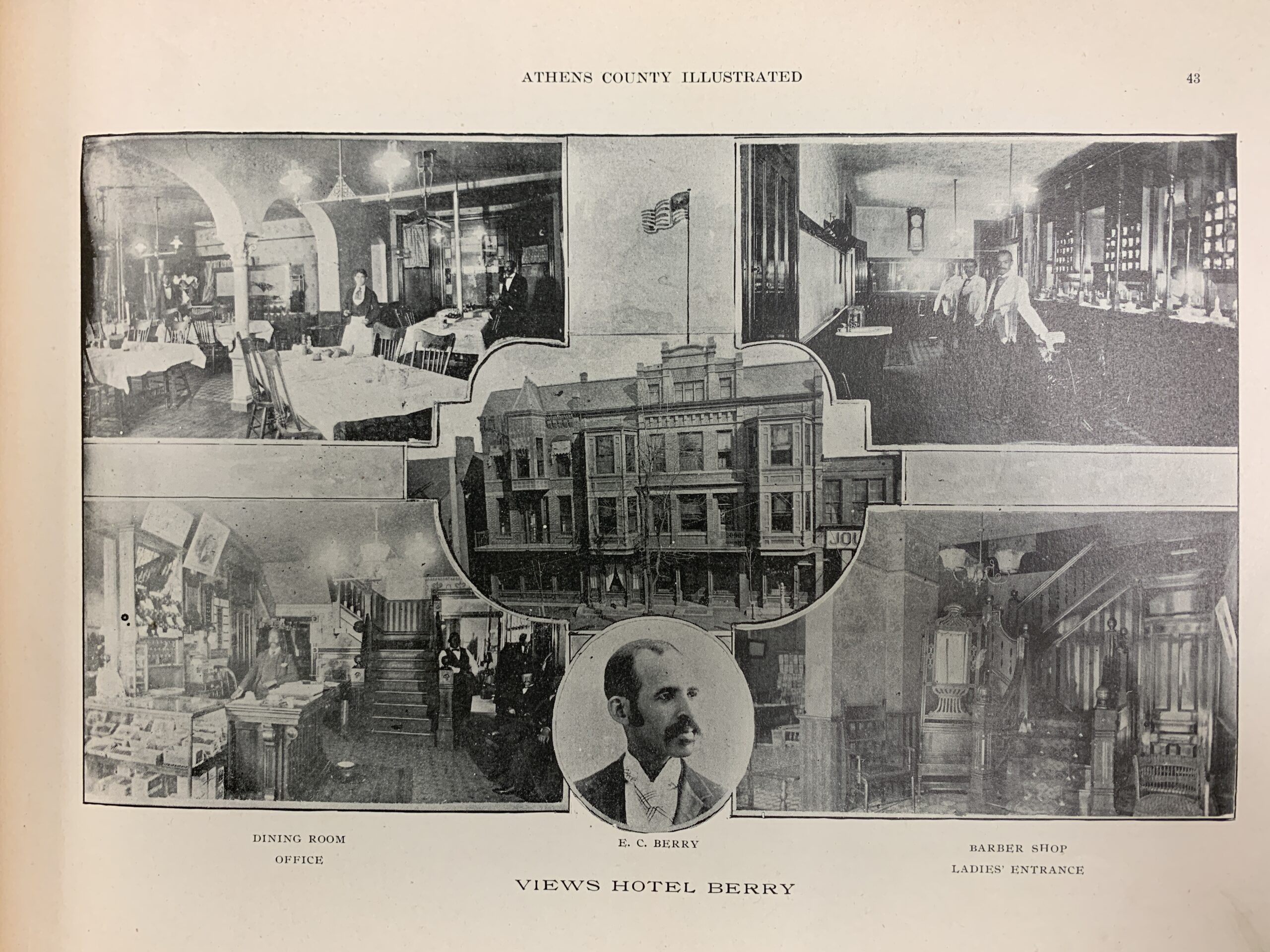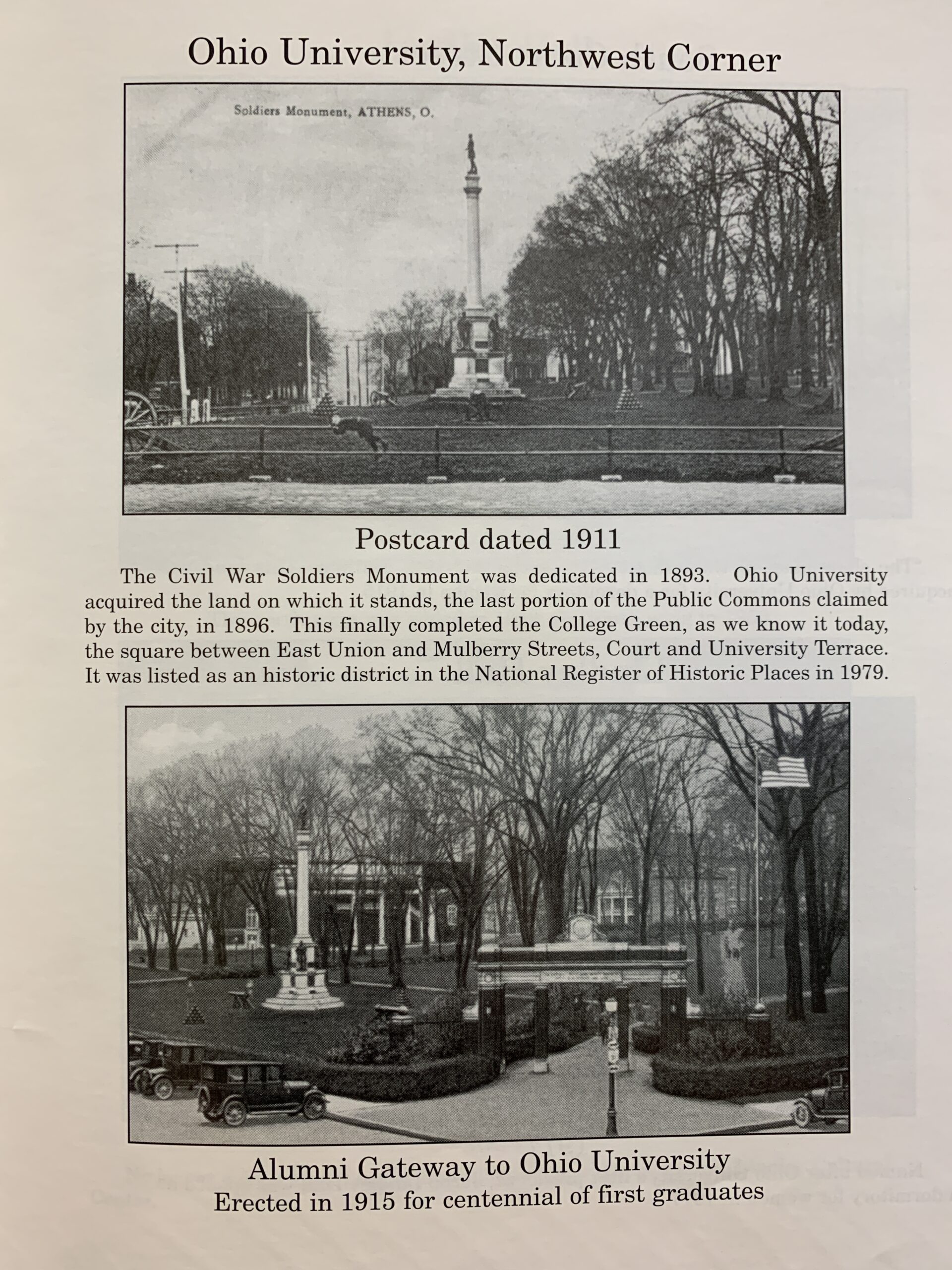By Alexis Voisard, MA student in English, 2022-23 Rare Book Graduate Assistant
As the new Graduate Assistant in the rare book collection , I’ve spent hours exploring the diverse collections online and roaming the rare book stacks in person. Since I recently moved to Athens, I was immediately drawn to the Ohioana Collection . Building my first exhibit, I knew I wanted to highlight the local, Appalachian context around me.
Seeing how large the Ohioana Collection is, I was excited to explore the local knowledge right in front of me. Several writers and figures in Athens’ history inspired this exhibit as I got to know Athens a little better through items in the rare book collection.
My new exhibit honoring Athens’ beginnings and progress through history is featured in a display case in the Dean’s Suite on the 5th floor of Alden Library. It will be on view through the end of fall semester. Stop by when the 5th floor is open .
Getting to Know Athens
Marjarie S. Stone and Elizabeth Grover Beatty’s Getting to Know Athens County serves as the inspiration for the exhibit’s title.

Similar to Stone and Beatty, I was interested in learning about how Athens has changed over time. Beatty cleverly remarked that after she returned from a trip abroad to Mexico, she felt she knew more about a foreign city than Athens County where her family is from! My exploration through the Ohioana Collection is motivated by similar aspirations to dig deeper into Athen’s history and changes throughout time. In Stone’s As Time Goes By: A Pictorial Journal of Athens, Ohio , you can see her collection of postcards and photographs that illuminate these pictural changes. Stone’s work reminds me of connections to the past, present, and future of Athens as I walk by existing and lost structures.
William E. Peters got to know Athens County as a surveyor from 1888-1890. A Ride Around Athens County and Where and How to Find published in 1938 features maps of Athens county and a list of unique points of interest. In this list of entries, Peters recommended scenic drives along Peach Ridge Road. Recently, coming back from a trip to Strouds Run, I remembered Peters’ recommendation. I was about to turn left onto Strouds Run Road until I recognized the Peach Ridge sign ahead of me. I decided spontaneously to get to know Athens better and took the drive along Peach Ridge. The views were not disappointing! Do you recognize any spots on the map? Could you use it to get around Athens?

Athens’ Beginnings
Resolutions and Acts Passed by Ohio and Territorial Legislature , the oldest book in this exhibit, was published in 1816 and features a collection of resolutions and acts related to Athens’ beginnings. Emphasized here are records of legislation that officially established Athens on December 6, 1800.

100 years later, J.C. Tipton traced the progress since Athens’ founding in Athens County Illustrated . Flipping through the pages, I was fascinated by the success of the Berry Hotel, owned by Black community members, Edward and Mattie Berry.

Diverse Progress
Tipton explains that Berry “had as much faith in Athens as Athens had in him.” The Berry Hotel’s history is explored in depth in Ada Woodson Adams and Nancy E. Aiken’s A Significant Presence: A Pictorial Glimpse of the Black Experience in Athens County, Ohio . The Hotel received national acclaim as a site for fine dining. Mattie was well known for her pastries and guests traveled to the Hotel’s dining room for the country’s finest chicken dinner and oyster strew. Beyond good food, Edward was proud to serve white and Black customers, and he was proud that the Hotel served as a significant employer for Black community members. Unfortunately, with a change in ownership, segregation impacted the Berry Hotel’s progress. Fred Beasley bought the Hotel in 1935 and only accepted white customers. The Berrys continued to support the Athens community in different ways that can be seen today, including funding support for projects to build the Alumni Gateway and the Mt Zion Baptist Church on W. Carpenter Street. In 1961 Beasley sold the hotel to Ohio University which used it as a dorm for male students. Court Street Diner now stands in its place. The Hotel’s legacy is honored by a historical marker at the site and celebrated as Berry Day on May 23, established in 2004 by then Athens mayor, Ric Abel.
Carl H. Walker with Betty Hollow’s Soulful Bobcats is another book that highlights the achievements made in the Athens community by Black students attending Ohio University between 1950 and 1960. Walker was a member of the Soulful Bobcats, which organized reunions for Black students to gather. Inspiration for writing the book came from an interest similar to that of Stone and Beatty to discover untold stories. Little information about Black students could be found in Thomas Nathanael Hoover’s 1954 book, The History of Ohio University . Walker and Hollow used resources from the Mahn Center, including Adams and Aiken’s A Significant Presence , and interviews with Athens residents, to build a collection of autobiographical sketches that contribute to Ohio University’s history and recognize Black legacy and impact.
Alexis Voisard is the 2022-2023 Rare Book Graduate Assistant at the Mahn Center for Archives and Special Collections. She is currently researching Appalachian women’s digital composition practices to pursue an M.A. in English with a concentration in Rhetoric and Composition and a Graduate Certificate in Women’s, Gender, and Sexuality Studies.


